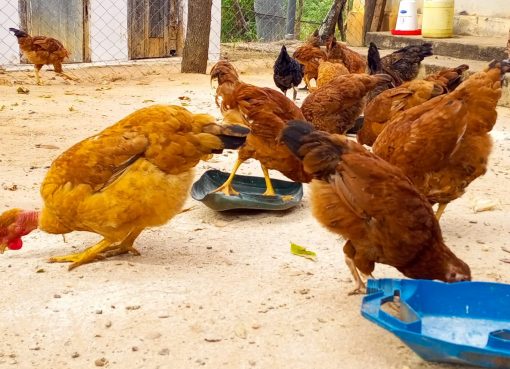The plight of the boy child has been depicted as one of doom and gloom. He has been left out of the equation in several aspects, including education and job opportunities.
According to statistics from the National Gender and Equality Commission (NGEC), there is a general consensus within the country that the boy child has been left behind. Their report on the perception of the neglected status of the boy child led to startling revelations.
“Majority, 92 per cent, of the respondents agreed that the boy child is lagging in the gender equality agenda whereas 8 per cent disagreed,” the study showed. Participants in the survey conducted in Kiambu and other counties agreed that if no interventions are made, the situation may worsen.
Further, data from the Ministry of Education shows that in the years of 2019 and 2020, more females than males sat for the Kenya Certificate of Secondary Education examination in Kiambu. In 2019, 15,997 girls took the exam against 14, 903 boys. In 2020, the numbers stood at 16,952 and 16,037 respectively.
At the workplace, the same applies. A visit to the premises of a business or an organization or agency will unveil the stark contrast in ratio between males and females. At the Kiambu High Court for example, out of the six Magistrates, only one is male.
The same situation is replicated in several other workplaces where the ratio of male to female staff working at organizations highly favors the latter.
Even among the small scale traders operating within Kiambu Town, the same is evident. In most of the stalls selling food and other products, you may walk an entire street in the area without seeing a male trader operating a stall.
It has been reported that, one of the major causes of the said neglect lies in the effort to empower the girl child. Those who participated in the survey by the body, suggested that the efforts tilted the scales in favor of the girls instead of balancing it.
According to them, in every forum where matters of development were being discussed, the boy child seemed to be left out. “They argued that even in addressing public gatherings, society and political leaders’ emphasized education for the girl child only,” they said.
Addiction to drugs such as alcohol and other harmful indulgences such as betting also seem to affect the male gender more. It is not uncommon to see young men loitering in various markets and townships of Kiambu appearing drunk or under the influence of a drug. This happens, even early in the morning and during the day when it is expected that one should be at work or school.
Further enquiries reveal that, some of these young men could have had a brilliant future were it is not for the addiction of drugs. They are said to have performed exceptionally in their KCSE exams, while some could have been university students enrolled in courses viewed as prestigious, dropping out owing to the effects of drug addiction.
According to the African Boy Child Network, a Kenyan Non-governmental Organization focusing on the boy child, Kiambu ranks top in the list of counties where the scourge is prevalent. “It is among the top three counties with the highest rate of alcohol and drug abuse, crime, dysfunctional families etc.”
So serious is the problem that leaders have spearheaded programs to deal with the issue. Upon being sworn in as Governor in 2017, Ferdinand Waititu, who has since been impeached named the fight against drug abuse as a top priority.
In his stint as the County CEO, he launched the Kiambu Youth Service as a program, meant to help people recovering from alcohol addiction which was later terminated.
Kiambu Women Representative Gathoni Wa Muchomba, on being elected, started the Mamacare Addiction Recovery Centre to help those addicted to various drugs. In the first cohort, there were 66 people, all of them male, and a majority being the youth.
Thirdly, the NGEC argues that, the kind of upbringing that the boys are getting is a contributing factor. NGEC says, “In a family where the father is often absent from home or is alcoholic, boys lack role models and parental guidance and this affects their development and even behavior.”
Without the much needed father figures in their lives, the boys, left to their own devices, may turn to the wrong direction for advice. One of them is peer influence which may lead the boys down the paths of destruction.
In the research done by the NGEC, the effect of peer pressure on the decisions of many boys, especially in their teenage years is far reaching. “Many boys drop out of school because their friends have done the same. Likewise others engage in economic activities that keep them out of school because they see their friends doing so and making money.”
Through peer pressure, the boy child is also likely to get involved in the abuse of drugs whose effects can be fatal. They may also get involved in illegal activities, risking death or jail terms.
A solution to these problems will require a multi-sectoral approach involving the government, both County and National and other stakeholders. Members of the society such as parents, teachers and religious leaders must also be involved as this is where the boy child exists.
It would involve allocating an equitable share to the needs of both the boy child and the girl child. In recent times, the bigger focus has been on the girl child, balancing the priorities will have the effect of gender parity, granting each gender an equal chance of succeeding in life.
The NGEC also suggests that the government initiate plans to alleviate poverty. According to the organization, this will ensure that only parents are working so that the boys can go to school. This is because, in families facing financial hurdles, boys may have to leave school and work in order for the families to make ends meet.
By Duncan Mutwiri





